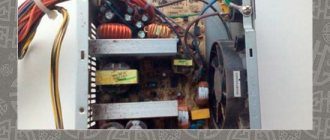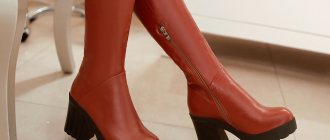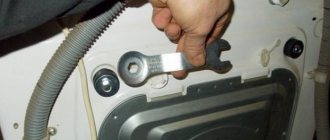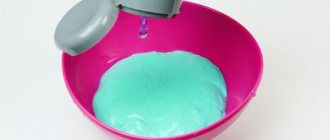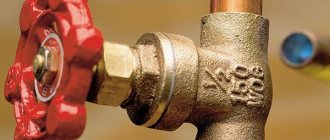Why do you need to clean and lubricate your laptop cooler?
Why is it necessary to clean? It's quite simple. Often the cause of such malfunctions is processor overheating. Despite the fact that the design features of laptops require operation with minimal power consumption, in some cases the graphics and central processor get quite hot and begin to require additional cooling.
To accomplish this task, all devices are equipped with a cooling system. It consists of several interconnected tubes that remove excess heat and transfer it to the radiator and fan. It is the fan that needs regular cleaning.
Cooling is carried out using air entering through the air intakes. Then it hits the cooler blades. This process occurs continuously, so over time, dust and dirt accumulate on the internal elements of the cooler. As a result, the fan that usually cools the “brains” becomes dirty, and in some cases stops rotating altogether. The temperature inside the case begins to rise, and when it reaches a critical point, the PC will turn off spontaneously.
Reference. The operation of the cooling system is reminiscent of a vacuum cleaner, because like it, the laptop fan actively sucks in dust and dirt from the environment. As a result, the dust accumulates into felt-like clumps.
To prevent breakdowns and extend service life, it is necessary to regularly remove accumulated dust and dirt, as well as lubricate the cooler. To do this, you need to choose the right lubricant.
Why does the cooler need to be cleaned?
An unpleasant taste and smell of water is not the biggest problem that requires cleaning the cooler. No matter how pure drinking water is, it is not distilled. Therefore, impurities included in the water cause scale to form on the heating elements of the device. Because of this, the heating time of the liquid increases, the taste of the drinks deteriorates, and you begin to notice a yellowish sediment in the cup. Also, scale can cause damage to the device, and repairing a cooler is much more expensive than cleaning it.
But nothing is more valuable than human health and safety.
The fact is that a humid environment is an excellent condition for the growth of bacteria. Therefore, over time, a bacterial film forms on the internal parts of the device, which contaminates drinking water.
How can you lubricate a cooler at home?
If you type this question into the search engine of any browser, it will return a huge number of results. Most of them are not credible, because the answers are not supported by facts, but are based on personal experience. However, experiments with lubricants can lead not only to the breakdown of fans, but also to the malfunction of other elements.
The main component of any cooler is the bearing. The latter comes in two variants: sliding and torsion. Each of them requires a different type of lubricant.
Most modern laptops use sliding bearings, so the appropriate lubricant should be selected. In addition, it must meet certain requirements:
- The viscosity must be suitable for high speed operation. Liquid products do a better job of this.
- The composition should include various dispersive substances, for example, Teflon. They are necessary for faster starting of the bearing.
- Do not have a negative impact on other elements of the cooler.
- The substance must penetrate inside without hindrance.
- One of the main characteristics is the high level of grip. Otherwise, the substance will simply flow out of the cooler.
Reference. These parameters are also suitable for the second bearing option. The main thing is that the chosen product should be more flexible.
The following tools meet all parameters:
- Automotive oil. You need to take “synthetics”.
- Special oil for sewing machines, trimmers, hair clippers and other power tools. Usually it comes with the product.
- Silicone Grease. You need one that is designed for lubricating door locks and gearboxes.
- Specialized lubricant designed for caring for coolers.
How to lubricate a laptop cooler so it doesn't make noise
Once you have chosen and purchased a suitable product, you can proceed to the process of lubricating the fan itself:
1. It is necessary to turn off the power to the PC and remove the battery.
2.How to remove the cooler correctly is indicated in the instructions. Typically, this requires removing the back cover of the laptop.
3.Use a soft brush to remove accumulated dust and dirt from the internal components of the laptop. Pay special attention to the processor and video card. A vacuum cleaner will be an excellent helper.
4.Unscrew several screws that secure the cooler. Don't forget about grooves, cables and other connecting elements. They must be carefully disconnected. After which you can remove the fan.
5.Take a cotton swab or small brush. Use them to carefully process the blades. You can also use a product based on medical alcohol for these purposes.
6. There is a sticker on the body of all coolers. You should find it and carefully peel it off. There is a miniature hole underneath it.
7.Using a medical syringe or pipette, draw out the required amount of lubricant and drop it into the hole. To ensure the mixture is evenly distributed, twirl the blades with your fingers.
8.The next step is reassembly and installation of the cooler. It is important to do everything exactly in the reverse order and do not forget to connect the cables and other connectors.
In conclusion, I would like to add that now many laptops are equipped with non-separable coolers. In this case, you will have to drill a hole in the PC case yourself; after lubricating it, you will need to seal it with tape. However, the effectiveness of this method has not been confirmed, so it is unlikely to be rational.
Eliminate laptop fan noise
When using the Acer Aspire 5512 WLMi laptop for a long time, an irritating noise became noticeable. It turned out that the noise was coming from the “main” processor fan of the computer. The noisy behavior of the cooler did not affect the performance of the laptop itself, but it did suggest that it would soon be in trouble.
Eventually the noise became so loud that the decision was made to replace the fan.
Despite the apparent difficulty of removal, the cooler is quite easy to dismantle. True, there are exceptions and some models may require more labor-intensive disassembly.
Removing the fan.
Unscrew the bolts and remove the cover on the bottom of the laptop.
Next, unscrew the miniature bolts that secure the cooler.
Unfasten the three-pin connector.
We take out the fan by carefully peeling off the black adhesive tape with which it is glued to the radiator.
Replacing a faulty fan.
Purchasing a similar fan turned out to be problematic. On the radio market we were able to find only used, “used” ones. It seemed impractical to purchase a fan that had already worked, despite the fact that the “native” one regularly generated speed and its motor was in good working order.
Debugg.
To disassemble the fan, you need to unscrew the bolts and remove the metal cover. The working blade with the motor is quite easily removed from the base. The photo shows the cooler disassembled.
After the faulty cooler was disassembled, the reason for the noisy “behavior” was clear. As a result of prolonged use of the laptop, the blade became skewed, causing the blade to touch the top cover when working. The marks on it were visible to the naked eye.
To prevent the blade from touching the top cover, it is necessary to install it slightly recessed in the fixing groove. This must be done so that when the top cover is installed, the blade does not touch the side walls of the base. We check the alignment by vigorously blowing air into the side hole. It is necessary to achieve rotation of the blade. The movement of the blade should be free and silent.
After installing the fan in the laptop, the noise disappeared.
After about 1.5 years, the laptop cooler began to make a lot of noise again. It was decided to re-disassemble and restore its correct operation. As it turned out, over the course of 1.5 years, a decent amount of dust had settled on the blades. Also, the alignment of the blade inside the housing was slightly disturbed, and it again began to touch the metal cover.
It is better to clean the blades with an unnecessary toothbrush - this makes it easier to remove settled dust. Next, you need to center the blade so that when moving it does not touch the top metal cover.
After this cleaning, the laptop began to work noticeably quieter.
This is how, by performing simple operations, you can eliminate the malfunction and save yourself from trips to the service center and the accompanying waste of money.
Source
How to choose a lubricant for a cooler?
For coolers, it is necessary to use inert organic silicon, that is, silicone grease or a mixture of silicone + Teflon.
The best option is to use silicone lubricant from the manufacturer. It lasts about 4-5 years and then dries out.
Branded lubricant MX-4 in a syringe
Litol-24
If such a lubricant is not available, Litol-24 will do. This is a refractory lubricant that is not afraid of heat.
The third option is solid oil. The principle of action is the same.
Synthetic or semi-synthetic engine oil creates a surface film at any temperature. As a result, there is less noise and almost no wear. Motorists usually have leftovers in cans in the garage. But it is best to use it together with Litol-24.
WD-40 is well suited for lubricating non-separable coolers. The tube attached to the can can be conveniently inserted into the gap between the body and the impeller. Adhere to the following rules:
- Insert the tube as deeply as possible so that the lubricant (at least partially) penetrates the bearings and does not spray all over the gap.
- When inserting through the gap between the impeller and the housing, do not use much force to avoid damaging the parts.
- If after this procedure the problems remain (noise, “wedge”), repeat the process.
WD-40
The use of WD-40 to lubricate fans in computers is being actively discussed on the Internet. Opinions are contradictory. Some sources claim that the product copes with the task perfectly, while others indicate that it is not worth using. Meanwhile, on the official website of the manufacturer of WD-40 there is not a word that the composition can be used to lubricate PC coolers. The product is recommended for removing grease, bitumen stains, adhesive residues and cleaning electrical contacts. It can be used to lubricate parts that do not rotate at high speed. Fans obviously don't belong here. And yet, when treating the cooler bearing with a chemical composition called WD-40, there will be an effect, but not a long-term one. The percentage of oils in it is low, and the main components are chemically very active, which threatens damage to the surfaces of the moving parts of the fan, their jamming and failure of the device.
Graphite grease
Many experts do not recommend using graphite lubricant because:
- graphite is a conductor of electric current and can become a source of even greater problems than the noise of moving elements of the PC cooling system;
- graphite lubricant is used to treat heavy mechanisms moving at low and medium speeds, and coolers are not one of them.
On the other hand, in some specialized compounds sold in computer stores, you can find a very small amount of graphite dust, which improves the sliding of bearing elements.
Removing hum from a hard drive
Some types of hard drives are very noisy during operation, while emitting additional sounds in the form of clicking and crackling. If the gadget previously worked quietly, but suddenly began to make noise, then this may indicate rapid movement of the block with magnetic heads. What can be done in such cases:
- Buy a new hard drive of a more advanced model that does not make noise. It is best to install an SSD drive that works quietly and quickly without disturbing the user or slowing down the system;
- Open the task manager and see if there are any active programs that are affecting your computer's performance. Most often these are torrents or p2p utilities.
If the disk has not made noise before, then you need to check it for errors and bad blocks. How to do it:
- Download Victoria version 5 from the official source. This is a utility that helps diagnose your hard drive. It can be used on operating systems such as Windows 7/8/10.
- Install the program on your computer. To do this, you need to open the downloaded utility and run the Victoria.exe file.
- When opening the program, you need to go to the language change section and select Russian mode.
- The user will see a list of disks that need to be checked. The user will need to select the desired one.
- After this, you need to press the SMART button and wait a little.
- If everything is fine with the disk, “good” will appear on the screen.
- Next you need to move on to testing the disk. Before this procedure, you need to close all active programs (games, torrents, browsers).
- Click on the Quick button to launch a quick diagnostic of problems and wait 5 minutes. While the program is running, the user is prohibited from performing any actions on his computer.
Next, the user will receive the diagnostic result. How to interpret it correctly:
- If the program does not detect serious violations in the operation of the disk, then a corresponding entry will appear on the screen stating that no errors were found. All blocks that appear on the screen will be gray;
- If the user detects green or orange blocks, this does not indicate that the hard drive is not operating correctly, but it does indicate that power-intensive utilities were activated during the scan;
- If red and blue blocks appear, this indicates serious problems with the disk. Most likely, it will have to be replaced to prevent noise.
Important! The user also needs to pay attention to the graph of the speed of reading data from the hard drive, built by the Victoria program. Normally, it should look like a straight line with slight slopes.
Which oil to choose?
Based on the above, the following oils have the best characteristics for lubricating fans:
- quite liquid;
- forming a film on the surface;
- having the effect of filling roughness and gaps.
This is a fairly large group of materials, and they definitely do not include animal and plant compounds in any proportions or variations.
The following products are most suitable for treating computer coolers: Low-viscosity oils. Among them are weapons-grade, transformer, machine, spindle, etc. They are distinguished by excellent penetrating ability and create a very thin film. Recommended for high-speed mechanisms with low dynamic loads.
Medium viscosity oils. This includes engine, transmission, etc. They form a thicker film, penetrate well and fill gaps, stay on the surface longer and can cope with high loads. They have a minus - they load the mechanism.
Separately, it is worth mentioning about high-viscosity lubricants. These include solid oil, lithol, etc. They can be used, but with caution, applying a tiny amount, and only for processing powerful coolers (for example, used in power supplies). Thick lubricating compounds do not penetrate well, but forced pressing into the gaps can help start up an almost “dead” device for some time (before purchasing a new fan). Small and microfans in laptops cannot be lubricated with such compounds. Meanwhile, specialized stores offer a wide range of lubricants for coolers. These synthetic lubricants are completely inert and operate in a wide temperature range (from -20 to +200...300 °C). Ease of use and precise dosing are ensured by a special syringe containing oil. And in most situations, it is better to use a ready-made solution (for example, SPO-1 or SPO-2 ).
How to clean dust and lubricate a laptop cooler that cannot be disassembled?
Good afternoon, dear peekaboo masters. My laptop Acer Aspire 7 a715-71g makes a rather unpleasant sound. I took it apart and thought about cleaning it from dust, but that was not the case, it turned out that this laptop had a non-dismountable cooler. The original spare part costs about 20 euros + delivery. I searched on the Internet on forums, many collective farmers drill a hole in the cooler. Are there any best ways to solve this problem?
No duplicates found
6.4K posts 10.4K followers
Community Rules
Create posts with the repair process in the parent community pikabu.ru/community/remont.
In this community, you can post posts asking for help with repairs.
electrical engineering. Digital, household, etc., and about the repair of paintings, apartments, baths and toilets, write in other communities

